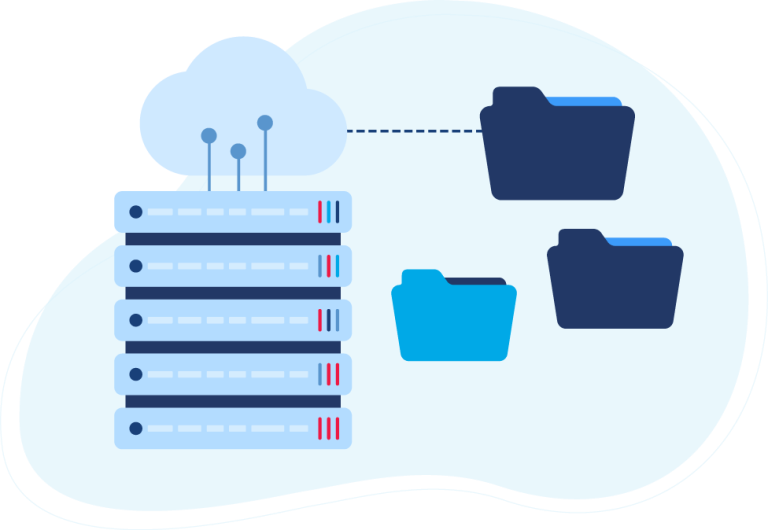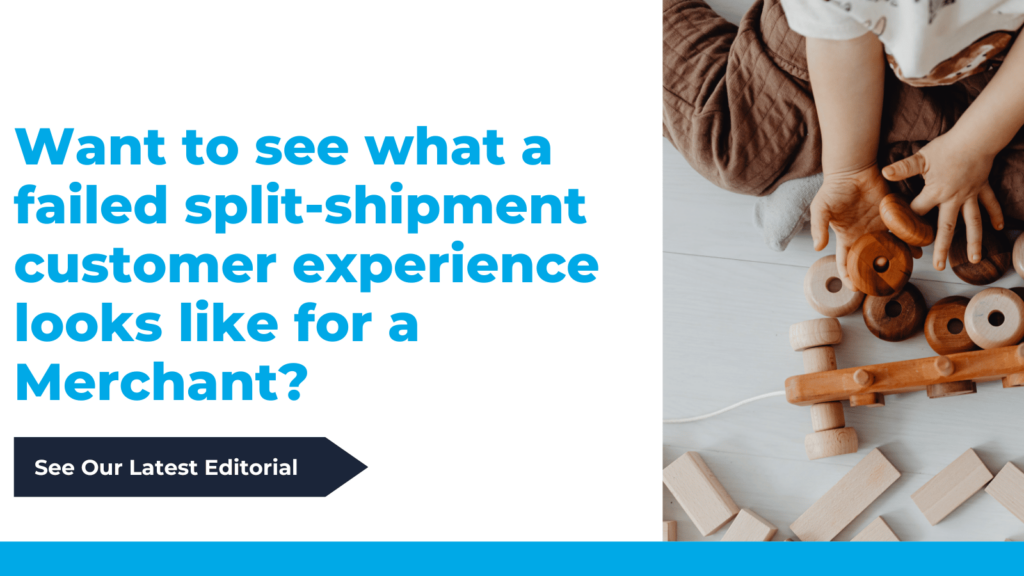eCommerce has come so much further than throwing up a site with simple commerce capabilities. Not only did the pandemic accelerate eCommerce growth, but it also spurred innovation – especially around customer experience and unique needs. One such case is split shipments.

What are split shipments?
The need for split shipments has come from customers – either end-users themselves or wholesale B2B customers – who require multiple delivery points on a single transaction. These delivery points can be physical locations, points in time, or both. While the ability to split shipments makes life easier for your customers, it passes the complexity of integrating this unique shipping treatment to the merchant. A few requests for splitting shipments might be able to be managed manually, but outside of this, split shipments can be automated and integrated into your existing tech stack.
Another reason to split shipments comes from your own warehousing needs: if you warehouse inventory in different locations, or if you do drop-shipping for certain products only, you may have a business use case for offering your customers split shipments on checkout. This is becoming especially common as more and more merchants and manufacturers go international.
Finally, split shipments occur as a form of risk management, especially when your specific business rules are applied and accounted for in your data integration strategy. Effective integration of split shipments can reduce the risk of delays or lost packages, especially when combined with effective customer communication tools.
What are split shipments?
The need for split shipments has come from customers – either end-users themselves or wholesale B2B customers – who require multiple delivery points on a single transaction. These delivery points can be physical locations, points in time, or both. While the ability to split shipments makes life easier for your customers, it passes the complexity of integrating this unique shipping treatment to the merchant. A few requests for splitting shipments might be able to be managed manually, but outside of this, split shipments can be automated and integrated into your existing tech stack.
Another reason to split shipments comes from your own warehousing needs: if you warehouse inventory in different locations, or if you do drop-shipping for certain products only, you may have a business use case for offering your customers split shipments on checkout. This is becoming especially common as more and more merchants and manufacturers go international.
Finally, split shipments occur as a form of risk management, especially when your specific business rules are applied and accounted for in your data integration strategy. Effective integration of split shipments can reduce the risk of delays or lost packages, especially when combined with effective customer communication tools.

Shopify and Split Shipments
As it stands today, split shipments cannot be effectively managed in Shopify within the application. There are just too many unique use cases for a single solution to fit everyone. Think about it: each business, whether a reseller, brand, or manufacturer, has a different set of applications that compose its technology stack. Special data treatments like splitting shipments lives in between these applications within the business rules applied to the data as it’s transformed between applications via your integration service provider. Where SKUs live, what they are (perishable? CPG?), when they can be shipped, whether their international with international shipping requirements and Duties, whether the customer is a B2B customer or not, and on and on – the list of requirements is potentially limitless, and is entirely up to what your business needs and can provide to your customers.
With Shopify Plus, split shipments become a more common request for VL OMNI. Shopify understands the complexities outside of their core competency of eCommerce and vast. This is why Shopify has an extensive network of partners – to solve unique edge cases like split shipments for Merchants.
This is a growing trend, across the eCommerce spectrum, both businesses and Merchants are demanding greater control and flexibility and visibility for their shipments. In turn, logistics companies are offering more flexible shipping solutions for both international and domestic customers.
How VL OMNI’s Integrations Can Help With Split Shipments
In cases where an order needs to be split by where they’re shipped from, native integrations offered by delivery management solutions are not suitable to perform the heavy lifting in data movement. While native integrations are great for SMB-sized businesses, scaling businesses with complex technology stacks need a scalable integration platform to rationalize their data and process error-free split shipments.
For instance, VL OMNI’s integrations for shipping and fulfilment can split an order, categorize the data and direct it to its proper target application. Once tracking details are applied after the pick, pack and ship process, the VL OMNI integration platform can create a direct relation to the original Order IDs. With the data properly lined up, we can trigger multiple tracking emails and close the order once the final item has been shipped.
VL OMNI’s enterprise and mid-market merchants, generally have a complex supply chain. They could have multiple 3PLs, their own warehouses, and drop-shippers, the needs and set-up variations can be endless.
In cases where an order needs to be split by where they’re shipped from, our integration can split an order, categorize the data and direct it to its proper target application. When tracking details are applied after the pick, pack and ship process, the VL OMNI database can create a direct relation to the original Order IDs. With the data properly lined up, we can trigger multiple tracking emails and close the order once the final item has been shipped.
Not sure how data integration can help your business?
Error Reconciliation and Data Movement Redundancies
VL OMNI’s enterprise merchants experience a much higher volume of transactions than the average merchant. When dealing with an increased about of orders with split shipments, the ability for errors to occur also increases. Merchants in this scenario need to focus on error reconciliation and data movement redundancies when integrating between systems.
Merchants need an integration platform they can rely on to ensure all data is transferred correctly and not lost during the transfer. In the VL OMNI platform, we’ve built in multiple reconciliation processes to ensure all data is moving as it should, at speed and volume.
This is how the VL OMNI Platforms handles it:
- In high-volume moments or bursts, data can be received from Webhooks in an incomplete state. To reconcile, the VL OMNI platform will validate the data, and recall the APIs to complete the data in cases of errors.
- In high-volume scenarios, platform APIs can throttle out, preventing any further data transfers. With standard integrations, the order data is lost and never transferred as it’s pushed into a fully throttled API.
- On the VL OMNI platform, we can hold onto the data until the API throttling dials back, allowing us to resubmit the data to the target application. Data will never be lost and will get to its end destination.
eCommerce Complexity Is The Expectation
Adding split shipments into your eCommerce strategy is a great way to add more options for your customers to increase their customer experience, but you must ensure those options add value not headaches to the overall customer experience.
Customers expect a seamless experience at every part of the customer journey. The Economic Times states:
Good customer experiences are built on smooth transactions with your Brand at every stage. Those transactions are created with strong but agile data integration solutions.
Ultimately, those looking into split shipments for their business need to keep in mind the complexity it adds to the rest of their technology stack. Using an experienced integration partner allows you to automate that complex data movement into every application without the need for manual data entry, or recurring errors and at volume and speed.
 D365 Business Central
D365 Business Central Netsuite
Netsuite



